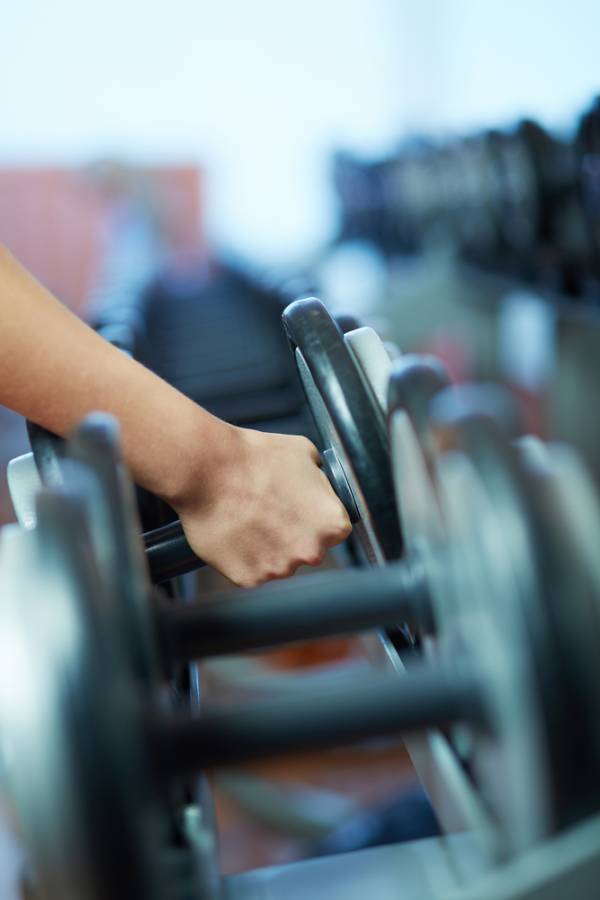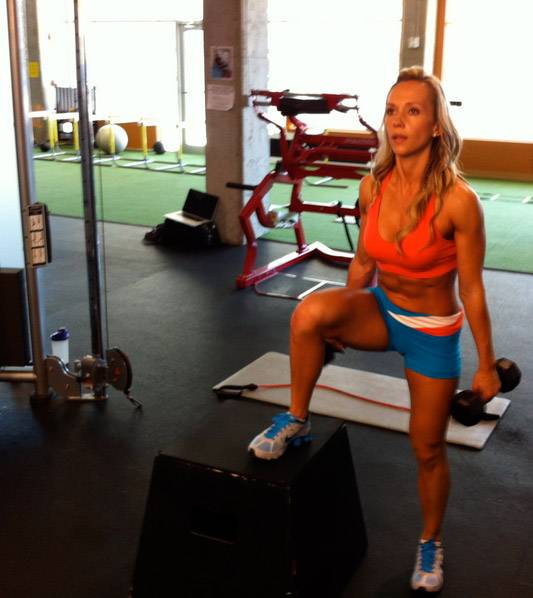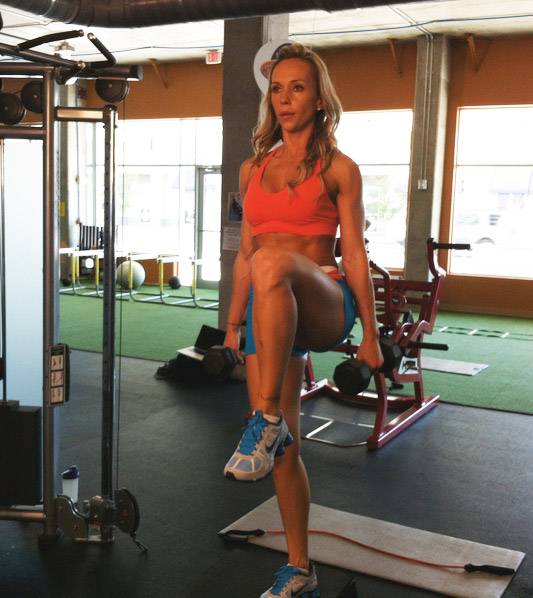Despite what some people think, weight lifting and running go hand and hand. For runners, strength training is a key component in boosting performance. Adding the strength you get from a weight lifting program will help you switch gears quickly and sprint faster. Another good reason to weight lift as a runner is to help maintain good running form even when fatigued. If you run longer distances, it is important to have good form when fatigued because this will help prevent injuries as well. So sprinters and long distance runners alike can benefit from strength training.
Many runners avoid weights because of a fear of bulking up or feeling heavy. But if you design your weight lifting program properly, you can build strength without bulking. In addition, lifting movements can provide greater range of motion than running. If you always remember to lift weights with good form throughout the entire range of motion then you will not lose any flexibility, and might even gain some.
In my experience, the best way to lift weights for runners is to use a heavy weight that is enough to push your limits after 5 repetitions. Lifting lighter weights with high repetitions and short breaks is fine for developing muscle size and endurance, but neither of those will make you run faster. Sticking to the heavy weights will help you to develop faster, more powerful muscle contractions.
Weight Lifting Myths for Runners: 1. The Lower Body
Many runners believe that running is all the leg work that they need. The general running gait strengthens and tightens some muscles, like the hamstrings and quadriceps, but other leg muscles like the glutes are not worked at all. An effective weight lifting program will address these deficiencies. This will keep the muscles balanced and your joints properly aligned, while helping to improve running efficiency and reducing your risk for injury.
Some excellent leg exercises are ones that include fundamental motions like the squat and deadlift. Start with single- and double-leg bodyweight exercises, gradually adding weights, and then incorporate explosive moves like a jump or skips for height.
Power-boosting plyometric exercises have been shown to improve time and running economy. Plyometric exercises include hopping, jumping, and squatting. Continually increase the difficulty by increasing your weights. An example of a great explosive exercise is holding dumbbells while doing jump squats. But remember, start with bodyweight and build up from there.
Weight Lifting Myths for Runners: 2. The Upper Body
Many runners also believe they don’t need to work out their upper body, but a good reason to train your upper body is to improve your posture. Getting rid of rounded shoulders will help you get more air in and out of your lungs. You’ll also carry your arms more easily, wasting less energy in your runs. Incorporating exercises such as rows and drills to improve shoulder and upper-back mobility is a very good idea. It is ideal to have a balanced upper and lower body, so working both equally is the key.
Weight Lifting Myths for Runners: 3. The Core
Another area sometimes forgotten by runners is the core. To reduce unwanted and inefficient motion during running, you need to train your core to provide stability. To achieve this, forget about situps. Instead focusing on static exercises like planks will give you the best core workout.
Getting Started Safely
Always start slowly into a weight-training program while supplementing your running. Always remember to warm-up and cool-down. The key is to not get injured and to slowly build muscle and growth, not go full out and cause problems for yourself. Your program should be focused on correcting muscle imbalances and fixing incorrect movement patterns, all while improving overall strength and explosive power. Both distance runners and sprinters will benefit from performing explosive exercises in the same way.

Weight training is the perfect off day routine for runners. By working out on your off days you are not fatigued from running and you can get the most out of weight training. If you don’t have any off days (and you should have them, by the way) be sure that you are well rested and perform your weight training routine after you have had a chance to eat and recover from your run.
Sample Weight Training Workout for Runners
Crossover Lunge with Weights
Standing tall and holding weights in each hand, bring your left knee up to your chest. You will feel the stretch under your thigh and into your glute. Release and, with control, step that same leg backwards diagonally, behind your stationary knee. Like a curtsey. Keep your shoulders and hips square so you feel a good stretch in your hips. Now stand tall and use your stationary foot to help push back up to standing. Repeat 10 per side for 3 sets.
Box Step Ups
Using any sort of step up (bench, stair), place one foot up so it forms a 90-degree angle with your hips and knee. Holding a weight in each hand, stand tall and drive your lower foot forward and up in front of you, raising that leg to a 90-degree angle. Do not jump up. Return your trailing leg back to the floor. Repeat 10 on each leg for 3 sets.


Deadlift
Stand with your feet about hip-width apart behind a barbell. Bend through your knees and hips to get your grip on the bar. You will be using your hips more. Stick your butt and chest out and keep your back flat. Hold the bar with your arms to the outside of your legs. Keep elbows locked and stand up with the bar by straightening out your knees and hips. Stand tall and squeeze your glutes. Keep the bar close to you at all times. Place the bar back on the ground. Reset your position. Do not round your back at any point while executing this exercise. Work up to 10 repetitions for 3 sets.
Shoulders Shrugs
Standing tall with weights in each hand, rise up on your toes while lifting your shoulders up to your ears. Come back down. Make sure you are using heavy enough weights to feel this in the top of your shoulders and in your calves. Repeat 15 times for 3 sets.
Single-Leg Dumbbell Row
Holding a weight in your left hand, brace your right hand on a chair. Hinge forward so your back is parallel to floor. Extend your left arm down and your left leg behind you. Slowly bend your left elbow and draw the weight up until your elbow is even with your torso. Do not let your hip lift as you draw your elbow back. Hold, then lower your arm. Do 10 reps. Switch sides. Complete 3 sets.
Weight training is not the enemy of runners. It doesn’t have to mean packing on a ton of muscle and slowing you down. Done properly, it can be a healthy addition to your training program and it will make you stronger and less prone to injury.
Photos 1-3 courtesy of Shutterstock.






